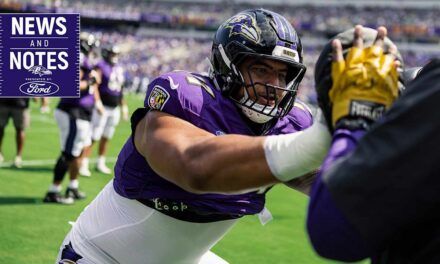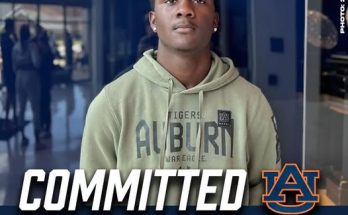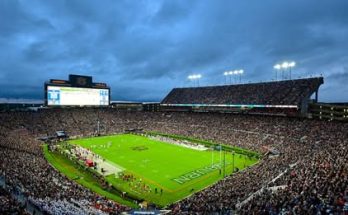The preseason period in the NFL always comes with an unusual blend of excitement and anxiety. Excitement arises because teams, players, and fans get a glimpse of what lies ahead in the regular season, but anxiety comes in because this is also the time when injuries are most prevalent. For players trying to secure a roster spot or starters looking to fine-tune their bodies before the grind of a 17-game schedule, injuries can derail months of preparation and hard work. In recent updates that have shaken fans and team staff alike, Adisa Isaac has suffered a dislocated elbow while Keaton Mitchell is dealing with a hamstring injury. Both situations underscore the harsh realities of professional football: the line between potential stardom and an untimely setback is often razor thin.
Adisa Isaac’s situation highlights the challenges faced by young defensive players trying to carve out meaningful roles. A promising pass rusher who entered the league with plenty of potential, Isaac has been working tirelessly to adjust to the professional level. He possesses the kind of athleticism and explosiveness that teams covet, but he also knows that consistency, durability, and availability are just as crucial as raw talent. A dislocated elbow is a painful and often complicated injury. It can occur when the joint is bent or hyperextended in an awkward position, something that happens frequently when linemen and linebackers get tangled up in the trenches. The rehabilitation process depends heavily on the severity of the dislocation and whether there is additional ligament or bone damage. In many cases, a straightforward dislocation without fractures may heal within six to eight weeks, but in professional football, even a few weeks on the sideline can feel like a lifetime.
For Isaac, this injury could not come at a more difficult time. Training camp and preseason reps are essential for him to earn trust from the coaching staff and carve out defensive snaps once the real games begin. While veterans often receive lighter workloads, younger players are evaluated closely in every drill and scrimmage. Missing practice time limits his ability to showcase improvement, work on technique, and demonstrate reliability. From a broader perspective, this is also a setback for his team’s defensive rotation. Pass rushing depth is one of the most critical elements of a successful defense, especially in today’s NFL where high-powered passing offenses dominate. Losing a young contributor, even temporarily, puts additional strain on starters and forces coaching staff to reshuffle rotations.
Meanwhile, Keaton Mitchell’s hamstring issue is another example of how quickly fortunes can change for emerging players. Mitchell burst onto the scene with a blend of speed, vision, and playmaking ability that immediately caught the attention of coaches and fans. Running backs in today’s NFL need versatility—being able to run between the tackles, catch passes out of the backfield, and contribute on special teams. Mitchell has demonstrated flashes of all three, making him a valuable asset for his team’s offense. But the dreaded hamstring injury can become a recurring nightmare for players who rely heavily on speed and acceleration.
Hamstring injuries are notoriously tricky because they affect the explosive movements that define football. Sprints, cuts, and sudden changes in direction put immense strain on the hamstring muscles. Even a minor strain can linger if not treated properly, and rushing back too quickly almost guarantees re-injury. For a player like Mitchell, whose game is predicated on burst and elusiveness, a compromised hamstring limits his effectiveness. Coaches often emphasize caution in these situations, preferring to hold players out of practice rather than risk long-term damage. Yet, for the player himself, sitting out feels like lost opportunity, especially when roster competitions are fierce.
The timing is again crucial here. Mitchell is entering a phase of his career where he needs consistent reps to solidify his role. While established veterans can miss time and still maintain their positions, younger players cannot afford extended absences. Every day he spends recovering, another teammate is showcasing his abilities and making a case for more playing time. In the high-stakes world of the NFL, availability is often the greatest asset.
Both injuries also speak to the larger theme of how fragile NFL careers can be. Football is a physically demanding sport where injury risks are omnipresent. Teams invest millions in strength and conditioning programs, advanced recovery technology, and medical staffs, yet injuries remain inevitable. For Isaac and Mitchell, these setbacks are reminders that success in the NFL requires more than talent—it requires durability, resilience, and sometimes even luck.
From a medical perspective, Isaac’s dislocated elbow will likely keep him in a brace or sling for several weeks, followed by a gradual rehabilitation process focused on regaining range of motion, strength, and stability. Players often describe the pain as sharp and immediate, with lingering discomfort that can affect tackling and shedding blocks. The mental challenge of trusting the joint again once cleared for contact is also significant. Defensive players in particular must have confidence in their arms and shoulders to engage blockers, wrap up runners, and make explosive movements without hesitation. Returning too soon or lacking confidence in the injured limb can diminish performance and even lead to further injuries.
Mitchell’s hamstring rehabilitation will focus on rest, gradual strengthening, and progressive sprint work. Trainers typically monitor players closely, testing acceleration, top-end speed, and lateral movement before clearing them for full participation. The difficulty lies in the fact that hamstring injuries often feel improved before they are fully healed. Many players return to practice only to suffer setbacks within days. Teams have become increasingly cautious in recent years, recognizing that a recurring hamstring injury can derail an entire season. Mitchell will need patience, but patience is not always easy when careers depend on every opportunity.
On the field, the ripple effects of these injuries extend beyond the individuals. Defensive coordinators who anticipated using Isaac as part of a pass rush rotation must now adjust. They may elevate another young player, reshuffle veterans into heavier workloads, or even consider signing a free agent if the recovery timetable is uncertain. For Mitchell’s team, the running back depth chart suddenly faces scrutiny. While many NFL teams use committees to distribute carries, each player brings unique skills. Mitchell’s absence could force the offense to lean more heavily on other backs, potentially altering play-calling tendencies. Offensive coordinators value speed backs like Mitchell for their ability to stretch defenses and create mismatches, so his absence may limit certain play designs.
Fans often underestimate how much preseason injuries alter long-term planning. Beyond the immediate recovery period, there is the question of conditioning. Even if Isaac returns in six weeks, he will have missed significant practice time, which can affect his stamina and timing. Similarly, Mitchell may need weeks to regain peak explosiveness after his hamstring heals. Coaches are then tasked with gradually reintegrating these players without compromising team chemistry. For teams chasing playoff aspirations, early-season depth matters. Injuries during preseason are especially frustrating because they rob players and teams of valuable development time before the games that count.
Yet, amid these challenges, opportunities also emerge. The NFL is filled with stories of backups who capitalized on unforeseen chances due to injuries ahead of them. For Isaac’s absence, another defensive player will have the chance to earn reps in practice and perhaps even force his way into the rotation. For Mitchell’s injury, another running back may take advantage of preseason snaps to showcase reliability. Coaches often stress the “next man up” philosophy, and situations like these demonstrate why it exists.
The human side of these injuries cannot be overlooked either. Both Isaac and Mitchell undoubtedly feel frustration, disappointment, and perhaps even fear. Injuries threaten not only physical health but also career trajectory. For young players, the window to prove oneself is narrow. There is pressure to return quickly, but also the looming risk of long-term setbacks if they rush. Family, teammates, and medical staff become crucial support systems during recovery. The mental resilience to stay engaged in meetings, learn schemes, and support teammates while sidelined is often as important as the physical rehabilitation itself.
In the larger context of the NFL, these updates highlight once again how unpredictable the league can be. Just as fans and analysts begin to project breakout years for certain players, the cruel reality of injury interrupts. Coaches must adapt, teammates must rally, and players must persevere. Isaac’s dislocated elbow and Mitchell’s hamstring strain are not career-ending injuries, but they represent significant hurdles that will test their resolve. Both have the talent and work ethic to overcome these challenges, but the path forward will require patience, discipline, and an unwavering commitment to recovery.
As the season approaches, eyes will remain on updates regarding their progress. If Isaac can return by mid-season with full strength, he still has a chance to become a reliable part of the defense. If Mitchell can manage his hamstring properly and regain his trademark explosiveness, he can still be a game-changer in the backfield. Their setbacks, while discouraging, also provide opportunities to demonstrate resilience—an invaluable trait in a league where adversity is constant.
Ultimately, the stories of Adisa Isaac and Keaton Mitchell in this moment are not defined by misfortune alone, but by how they respond. Injuries may temporarily alter their trajectories, but history is filled with players who came back stronger after setbacks. The preseason is a reminder that nothing is guaranteed in football, and for Isaac and Mitchell, the challenge now is to embrace the grind of recovery while keeping sight of the goals that drove them to this level. Their talent remains undeniable, and if they can overcome these obstacles, their futures in the NFL can still be as bright as ever.



